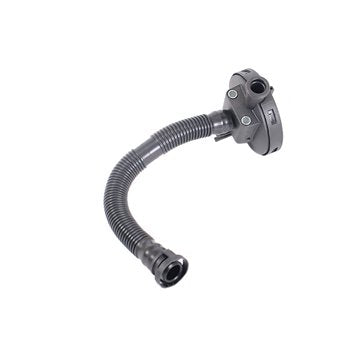Exactly How a Clp Engine Can Improve Performance in Different Industries
The development of CLP engines notes a significant shift in operational effectiveness across numerous industries, driven by their capacity to maximize gas usage and decrease downtime. As organizations increasingly prioritize sustainability together with efficiency, the duty of CLP engines comes to be even more critical.
Summary of CLP Engines
CLP engines, or Continuous Fluid Propellant engines, stand for a considerable improvement in propulsion innovation, particularly for space applications. These engines utilize a continual feed system that permits the continual expulsion of propellant, causing improved efficiency and efficiency compared to conventional strong or hybrid propulsion systems. By keeping a continuous flow of fluid propellant, CLP engines can accomplish more specific thrust control, which is essential for steering spacecraft in various goal situations.
The design of CLP engines incorporates advanced products and innovative gas administration systems. clp engine. This results in reduced weight and raised reliability, essential aspects for long-duration space objectives. The continual operation decreases the risk of burning instability, an usual difficulty in conventional rocket engines.

Advantages in Production
The production of Continual Fluid Propellant (CLP) engines offers numerous significant advantages that improve both efficiency and cost-effectiveness. Among the primary advantages is the structured production process, which minimizes the intricacy connected with conventional propulsion systems. By making use of liquid propellant, suppliers can achieve greater precision in engine efficiency, bring about maximized energy outcome and decreased waste.
Additionally, CLP engines promote a higher degree of modularity, permitting simpler integration right into different manufacturing lines. This flexibility can dramatically reduce lead times and boost general operational versatility. The use of CLP technology likewise tends to decrease the requirement for comprehensive maintenance due to less moving components, which translates right into reduced downtime and functional costs.

Applications in Logistics
Leveraging Continuous Liquid Propellant (CLP) engines in logistics provides considerable benefits in functional effectiveness and reliability. These engines give a durable option for different transportation requirements, allowing the Read More Here seamless motion of goods throughout substantial distances. The intrinsic layout of CLP engines permits regular power output, which equates right into smoother and more predictable transport timetables.
One of the essential applications of CLP engines in logistics is in sturdy products transport, where they can drive both ground and aerial cars. Their ability to keep high performance under varying load problems makes sure that shipment timelines are met, therefore boosting customer satisfaction. In addition, CLP engines can be incorporated into automated logistics systems, facilitating real-time monitoring and enhancing route preparation.
Furthermore, the sturdiness of CLP engines reduces maintenance downtime, permitting logistics business to maximize my blog their functional capabilities. This is specifically useful in warehousing operations, where effectiveness in handling and moving products is important. As logistics remains to advance, the combination of CLP engines stands for a forward-thinking method that not just enhances efficiency but additionally supports the market's expanding needs for integrity and speed.
Effect on Power Efficiency
How do Continual Fluid Propellant (CLP) engines enhance energy effectiveness in transport? CLP engines make use of a constant flow of liquid fuel, enhancing burning processes and maintaining a stable thrust outcome. This layout reduces power losses connected with conventional burning engines, where gas distribution can vary and cause inadequacies.
The continuous operation of CLP engines enables an extra efficient thermal cycle, resulting in higher certain impulse contrasted to standard engines. clp engine. This equates to minimized fuel consumption for the same amount of job done, significantly lowering functional prices throughout various transportation industries, consisting of aeronautics and maritime markets
Moreover, the capacity of CLP engines to maintain optimal performance under varying load conditions reduces the need for frequent acceleration and deceleration, even more improving fuel efficiency. Improved energy efficiency not just adds to browse around this site set you back financial savings however likewise brings about reduce greenhouse gas discharges, straightening with international sustainability objectives.
Future Trends and Innovations
Arising innovations in Continual Fluid Propellant (CLP) engine innovation assurance to change the landscape of transport effectiveness and sustainability. As markets pivot toward greener choices, CLP engines stand at the center, integrating innovative products and layout methods that improve efficiency while decreasing environmental impact.
Among one of the most promising trends is the fostering of hybrid systems that combine CLP engines with renewable resource sources. This harmony can maximize fuel intake and minimize emissions, aligning with international sustainability goals. Moreover, innovations in computational fluid characteristics (CFD) are assisting in the style of even more aerodynamically effective engines, leading to lowered drag and enhanced gas effectiveness.
Moreover, the development of wise monitoring systems is set to boost operational performances. These systems leverage information analytics and IoT technology to enhance engine efficiency in real-time, guaranteeing that the engines run within their most efficient specifications.
As study remains to check out different propellant formulations-- such as biofuels and artificial gas-- the future of CLP engines looks appealing. By using these technologies, sectors can not only enhance their performance but likewise contribute substantially to a cleaner, much more lasting future in transportation.
Verdict
In final thought, CLP engines represent a considerable development in efficiency across numerous sectors. The assimilation of sophisticated materials and fewer relocating parts reduces maintenance requirements, while placement with sustainability objectives settings CLP engines as a critical technology for the future.